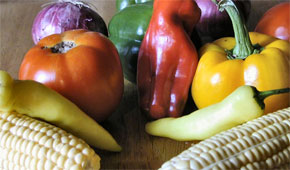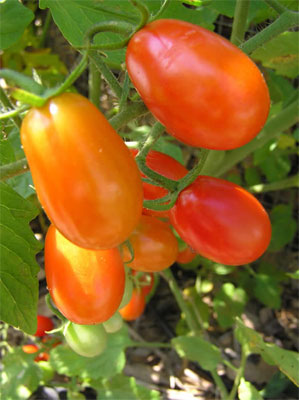Experts Offer Advice On Summer Vegetable Harvesting In North Escambia
June 26, 2010
 Early summer vegetables are nearing harvest time, but when is the perfect time to pick? Dan Gill and Allen Owing, Louisiana State AgCenter Horticulturists offer the following tips for picking the perfect time to pick your vegetables in the North Escambia area:.
Early summer vegetables are nearing harvest time, but when is the perfect time to pick? Dan Gill and Allen Owing, Louisiana State AgCenter Horticulturists offer the following tips for picking the perfect time to pick your vegetables in the North Escambia area:.
Harvest sweet corn when the silks turn light brown or darker. Peel back the shuck to see how well the kernels have developed before removing the ear. The juice of the kernel should be milky when you puncture it with your thumbnail.
Cucumbers can be harvested at your desired size; however, harvesting should be done before the cucumber begins to lose its green color. When old cucumbers begin to yellow, they’ll have well-developed seeds and become bitter. If the fruit is allowed to mature and turn yellow on the plant, the plant will stop producing new fruit.
Eggplants should be harvested when they are one-third to two-thirds of their full, mature size. The skin should be glossy. If the skin is dull, this indicates over-maturity, and the fruit will be seedy and often bitter. Harvest eggplants using pruning shears because the stem is tough.
Peppers, both sweet and hot, can be harvested at any size or color. Most peppers will turn red at maturity, but some may be green, purple, yellow or orange along the way.
 Tomatoes can be harvested any time after green fruit begin to turn pink. Best quality, however, is obtained when fruit fully ripen on the plant. If you harvest early, often to get the fruit out of harm’s way from birds and insects, you can ripen the fruit at room temperature and still expect excellent quality. Tomatoes don’t need light for ripening, so there’s no need to put them in a window.
Tomatoes can be harvested any time after green fruit begin to turn pink. Best quality, however, is obtained when fruit fully ripen on the plant. If you harvest early, often to get the fruit out of harm’s way from birds and insects, you can ripen the fruit at room temperature and still expect excellent quality. Tomatoes don’t need light for ripening, so there’s no need to put them in a window.
Okra should be harvested every two to three days. Most types should be harvested when they are young, tender and less than 3 inches long. The pod snaps easily from the plant when it’s harvested at the proper stage.
Summer squash, including zucchini, should be harvested small (one-half to two-thirds the mature size) and immature while the skin is still tender. The more frequent the harvesting, the more fruit the plant will produce. Use a knife to remove the fruit and leave 1 inch of stem attached.
Harvest the pods of Southern peas – purple hull, black-eyed and others – when they’re well-filled and have changed to a light straw, silver or purple color, depending on the variety. They shell easiest at this stage.
Harvesting watermelons is a bit tricky. Look at the tendril or “pigtail” closest to the melon. When this tendril turns brown and dries out, it is a good sign that the melon is ripe. Also look at the bottom of the melon where it lays on the ground. When this area, sometimes referred to as the “color spot”, turns from white to a light yellow, there is a good chance the watermelon is ripe. The thump test is done by thumping the top of the melon. If the watermelon has a dull thud when thumped, it is very possible the melon is ripe. Unripe melons will usually have a tighter, ringing or hollow sound.



Comments